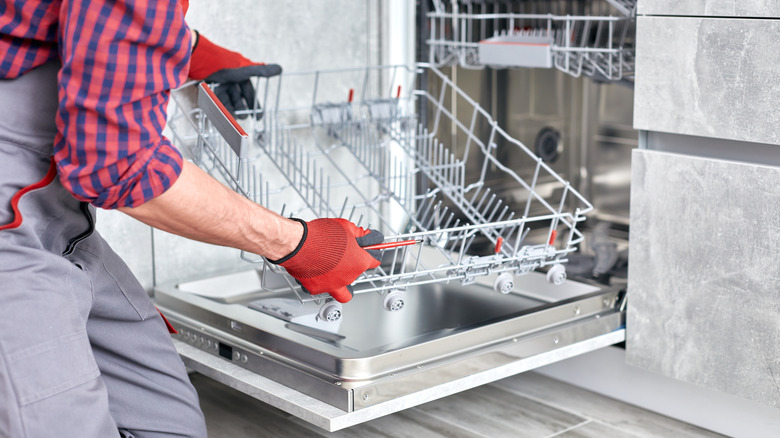What The Error Codes On Your GE Dishwasher Mean (& How To Fix It)
If your GE dishwasher is displaying error codes, it can be frustrating, but most of these issues are easy to troubleshoot and resolve yourself. From leaks to motor problems, knowing what each code means can help you use your dishwasher better. In this article, we will break down the most common error codes you may encounter, along with step-by-step guidance on how to fix them, saving you time and money.
One of the most common codes you will see on your dishwasher is "C3" or "F98" which typically points to draining issues at the end of the cycle. This is most usually due to a clogged drain filter, so remove and clean out that filter first. If the issue continues, look for blockages or kinks in the drain hose that may be slowing down water flow. Sometimes the pump motor might also be bad, and you will have to replace it.
"Leak Detected" is another common error codes that you may encounter. Depending on the model, this could appear as "F34," and it generally indicates a water leak or a problem with the dishwasher's sensors sensing water. Check the bottom under the dishwasher for leaks if you can. If there's a leak, turn off your dishwasher and tighten any connections while also checking the hoses and the connection for blockage or damage. If the leak continues, call a service professional to replace the hose on your dishwasher.
Troubleshooting other common error codes
"C6" or "F99" means the dishwasher can't get the water hot enough, typically 120 degrees Fahrenheit, so be sure the water is hot enough in the incoming pipes by running the adjacent faucet before starting the dishwasher. Change your water heater's setting if necessary, and don't run other appliances — such as the washing machine or shower — at the same time. Inspect the heating element and its wiring for damage or loose connections, verify the element's resistance (11–24 ohms), and replace it if defective.
If you find a "Code + H," then this indicates that the dishwasher is in Delay Start mode, which means that you schedule the next wash cycle at a later time. One of the hidden downsides to dishwashers can be energy usage, so this setting comes in handy for off-peak energy usage. Note that unlatching the door will not cancel the delay. As needed, reset settings until Delay Start mode is no longer engaged and a normal cycle is initiated.
The "H2O" code refers to the dishwasher not receiving sufficient water or not receiving any water at all. Make sure the hot water valve underneath the sink is all the way open for proper pressure. Such an error is common after plumbing work or if you recently turned off the supply line. Check that the dishwasher is level to ensure proper water flow, and reset the cycle if needed to reset the error.

